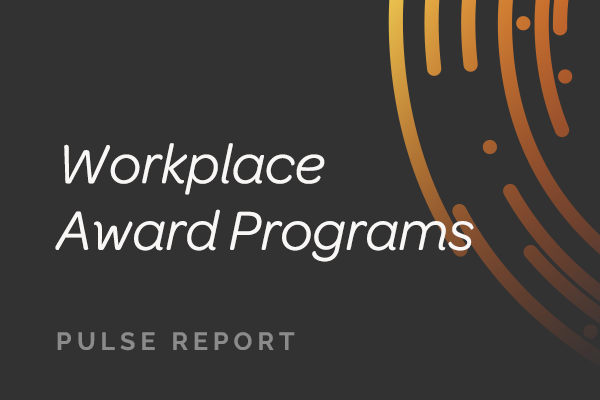
Your Crisis Communication Plan in an Age of Constant Crisis
December 13, 2023
We seem to be living in an age of constant crisis, with new once-in-a-lifetime disruptors regularly emerging. These are rarely simple issues, but rather are far-reaching, deep-rooted crises with wide-ranging reverberations. Your crisis communication plan, if you have one, often cannot predict just how far these reverberations may go.
For professional communicators, counseling leaders on when to engage with these issues, when not to engage, and how to clean up when engagement goes wrong, is an exhausting cycle — one with no apparent end in sight as the past five years have shown.
There are, of course, no easy answers. Crisis response isn’t distinguished by success, but by lack of failure, and requires a greater-than-usual capacity for ambiguity and ambivalence. To meet the moment — or, more accurately, the string of successive moments that may or may not cohere into something larger — communicators need to do two seemingly contradictory things at once: work with a comprehensive crisis communication plan and approach issues on a case-by-case basis.
Prepare for the unknown
The defining characteristic of a crisis is that it’s unexpected, yet you must expect the unexpected and be ready for it (whatever it is). Fortunately, preparation rests on the fundamentals of good employee engagement that you already practice — and most of that boils down to having a plan.
When people are emotional and worried, a crisis communication plan can prevent you from getting stuck. Your organization undoubtedly has a comprehensive crisis playbook with concrete actions, including who should speak, on what channel, to what audience, and what kind of messaging. Refreshing this resource is the first step in preparing for today’s rolling crises.
Here are a few tips to be prepared:
- To avoid figuring things out on the fly, focus on your RACI matrix to clarify who is Responsible, Accountable, Consulted, and Informed under various circumstances. Build out what you already know by asking: How should we prepare to approach a given situation differently in its second week? In its third month? After a year?
- Don’t view your playbook as a static document. Ensure that it’s a living document by debriefing regularly, not just when a crisis is “over” (it rarely is), but at regular intervals as it unfolds. Incorporate new best practices and employee feedback to capture what worked and, even more importantly, what didn’t. Documenting will help you move faster the next time a crisis hits.
- Finally, during those rare quiet moments, make time to think about the unthinkable. Add scenarios to your playbook that deal with a full range of possibilities, especially those you have yet to encounter: war, terrorism, cyberattacks, workplace violence, public health emergencies (e.g., pandemics), natural disaster, climate catastrophe, political crises, and more.
Build an adaptable plan
While a plan can point you in the right direction, every crisis has unique nuances. None of us work in a vacuum, and different crises affect us in different ways. It’s difficult to sit in uncertainty — businesses prefer the comfort of facts and figures — but you need to do so as you learn the particulars of each new situation.
Every crisis communication plan, no matter how detailed, is like a recipe with crucial ingredients missing. In most cases, these unknowns can be distilled into two variables: the nature of the crisis itself, and the needs and expectations of your stakeholder audience. Each of these variables is incredibly complicated and can transform by the minute.
It will almost never be possible to determine what you’re up against with 100% accuracy, but a few questions can help you get closer to understanding where these variables intersect:
- Does this issue have a direct effect on our business, employees, partners, or customers?
- Will taking a stand help us serve any or all of the affected groups?
- How does the issue align with our strategy and values?
- Can regional or generational attitudes help us determine whether and how to respond?
- Do we have expertise in the area (physical, political, etc.) where the crisis is unfolding?
- Can we provide influence, value, or material impact on the outcome?
Need help with your crisis comms?
Do the research necessary to get an accurate perspective. The facts can be hard to discern, especially in the early hours or days of an unfolding issue, so take information only from reputable outlets and experts. Be straightforward about acknowledging what is unclear or still unknown.
In terms of your stakeholder audience, gather as much direct insight from people as they’re willing to volunteer. Work through managers to get information directly from affected individuals and scan your enterprise social media and employee resource groups to understand what your audience is feeling. Where possible, refer to previous feedback from employee surveys and other outlets to understand your audience’s preferences when it comes to receiving messages around crisis situations.
The key is to gather these two streams of information as nimbly as possible. Then, combine them with past experience and, yes, your own gut to make quick decisions. Sometimes, the decision might be to not say anything at all, at least on an enterprise level, and that’s absolutely fine so long as it’s supported by your plan and the particulars of the situation — but even then, don’t let this be the end of it. Your crisis communication plan should have continued monitoring and reassessment steps outlined as the situation evolves. Be prepared to change course at any time.
What you owe your people
No matter what, when people are upset, it needs to be acknowledged by leadership. The scale and venue can vary — a CEO sending an all-company email is different from a diversity leader addressing an ERG on Slack — but it should be carefully tailored to consider the variables described above. Regardless of which approach you choose, here are some tips to keep in mind:
- What you choose to say is only the tip of the iceberg. Words are rarely enough, and any messages you put forward need to be supported by a solid foundation of action in the form of company donations, partnerships, community outreach, and other forms of active involvement.
- Regardless of any broad statements you make (or don’t make), you need to support your people. Who do your employees turn to for help and guidance? Direct managers? HR? Employee Resource Groups or DE&I? Make the case for additional resources to support and empower that group (or all of them).
- Supporting managers is key; they’re always on the front line whenever a crisis happens, big or small. In addition to serving as an important channel for information, managers should be empowered to show employees extra grace during difficult times, as they temporarily shift emphasis from hitting business targets to supporting employees’ emotional needs. On the flip side, leaders — and employees — should be prepared to show managers extra grace in return.
- Accept that opinions differ and that you likely won’t please every employee with your approach. Be sure to respectfully acknowledge this disagreement in the appropriate venue. That said, if you make a major misstep among a wide range of people, be ready to address and own it.
- Above all, be human. A crisis is no time for jargon and bottom-line considerations. Your people want to be reassured that their company and leaders have conscience and consideration. Supporting your culture and living your values is more important than any short-term loss of productivity.
There’s no set map to navigating this age of complex and persistent crises. What works for communicators at one organization might not work for those at another. As situations evolve and morph, so must your crisis communication plan with ever-shifting strategies and tactics. Nevertheless, preparation, resilience, and empathy will be your guiding signposts to the other side of any tumultuous period.
Contributors:
Janice Smith Collins
Senior Vice President
With a background in journalism and marketing and over two decades in communication, Janice is a brilliant strategist and DE&I advocate on ROI’s leadership team.
Jeff Lewonczyk
Director, Specialist
Jeff is a strategist and award-winning illustrator with a background in theater, music and arts advocacy. A resident of Brooklyn, he directs musical comedies and helps clients connect with their audiences through visually compelling stories and messaging.






